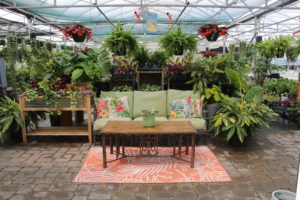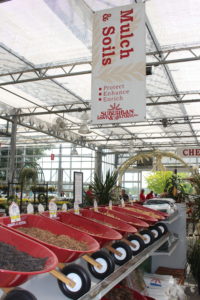Bugs Be Gone
Although separated by thousands of miles, American gardeners and farmers in West Africa have a lot in common. On both continents, growers have to be creative to find ways to outsmart pests in order to ensure successful harvests. Fortunately for gardeners in the United States, hippos in the vegetable bed aren’t the biggest problem.
But there are still plenty of other pests that can ruin a perfectly good growing season. Insects, hungry squirrels, browsing deer and other nuisance wildlife present a continuing challenge for gardeners from coast to coast. Gardeners struggle with trying to find a balance between attracting charming critters, like hummingbirds and butterflies, while keeping the troublemakers out.
Scare Away Pests
Today’s consumers are looking for pest control methods in a variety of price points that are also safe for the environment. Chemical repellents and homemade contraptions aren’t the only ways! Garden centers can add hard goods like these that have received rave reviews from consumers:
The Scarecrow Motion Activated Sprinkler, available from Nixalite (www.nixalite.com), is an updated version of a cornfield scarecrow, but instead of remaining static on a fence, this scarecrow uses a combination of noise, movement and water to shoo away unwanted animals. Birds, deer, pets and other small animals quickly scatter when they activate the Scarecrow. The unit waits quietly until alerted by any movement up to 35 feet away. Then it unleashes a three-second blast of water before automatically resetting itself for the next activation. The Scarecrow can be on duty 24 hours a day because it detects heat as well as motion. The unit is battery operated and uses only two to three cups of water per activation.
Nixalite also offers a Wildlife Barrier Kit that provides a solution for dealing humanely with problem pigeons or climbing animals. The stainless steel, needle-strips look like they’d be hazardous to an animal’s health, but they’re a safe control that keep birds and small animals away from protected areas. In fact, the U.S. Humane Society has approved the use of the Nixalite barrier kit. The Nixalite strips have 120 points per foot that extend in a 180-degree radius to dissuade birds from landing and animals from climbing. The strips are designed to be easy to install and can be mounted on any structural surface from downspouts to bird feeder poles.
In the “squirrels versus backyard birder” battle, the squirrels usually win, but now there’s a product that not only evens the odds, but is entertaining, too. SquirrelStop, available from Contech (www.contech-inc.com), is an automatic spinning squirrel deterrent that protects hanging bird feeders from ambitious squirrels. Whenever a hungry squirrel climbs onto the feeder, the SquirrelStop motor spins the feeder, causing the squirrel to jump and leaving plenty of seeds for the birds. This device requires no assembly and works with any hanging feeder.
Another environmentally responsible way to get rid of nuisance wildlife is the Mole Chaser Windmill. This inexpensive fan, available from Northern Tool (www.northerntool.com), is a safe way to get rid of moles by tapping into the power of the wind. When the wind blows, the fan begins to spin and creates a vibration that causes moles to pack up and move away. Many users say they were surprised that the windmill worked so quickly to rid their yards of these pests. The rustproof windmill covers an area of 100-feet in diameter when attached to an 8- or 10-foot-tall galvanized pipe (not included).
Attract and Destroy
A new way to prevent insects from disrupting summertime activities is the W*H*Y insect trap from RESCUE, available from Sterling International, Inc. (www.whyistheanswer.com).
The W*H*Y is designed to catch 20 different species of stinging insect pests including six species of paper wasps, two types of hornets and 12 species of yellowjackets. Researchers worked for more than six years to develop a device and an attractant formula that would trap paper wasps, Bald-faced hornets and European hornets, in addition to yellowjackets. Research showed that to capture all of these species, the unit needs three different attractants with two trap chambers and two separate entrances. The traps are environmentally safe: Once inside the trap, insects die naturally without the use of any killing agents. The device is also safe to use in areas frequented by beneficial insects because the attractant is designed to lure only the targeted insect pests.
Another alternative for retailers is to stock the same tool that helps to keep hungry African hippos away: battery-operated radios placed in the garden right before harvest.

















 Videos
Videos





